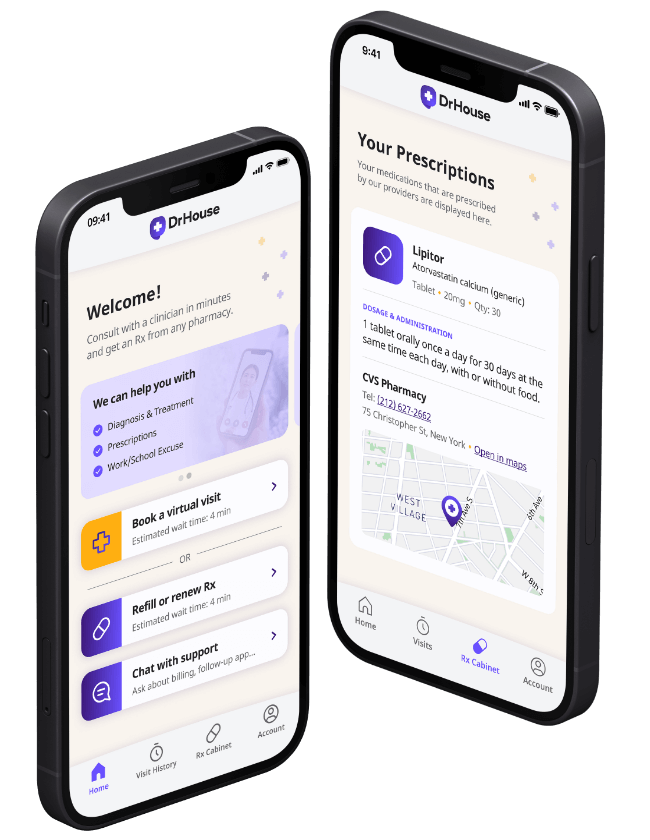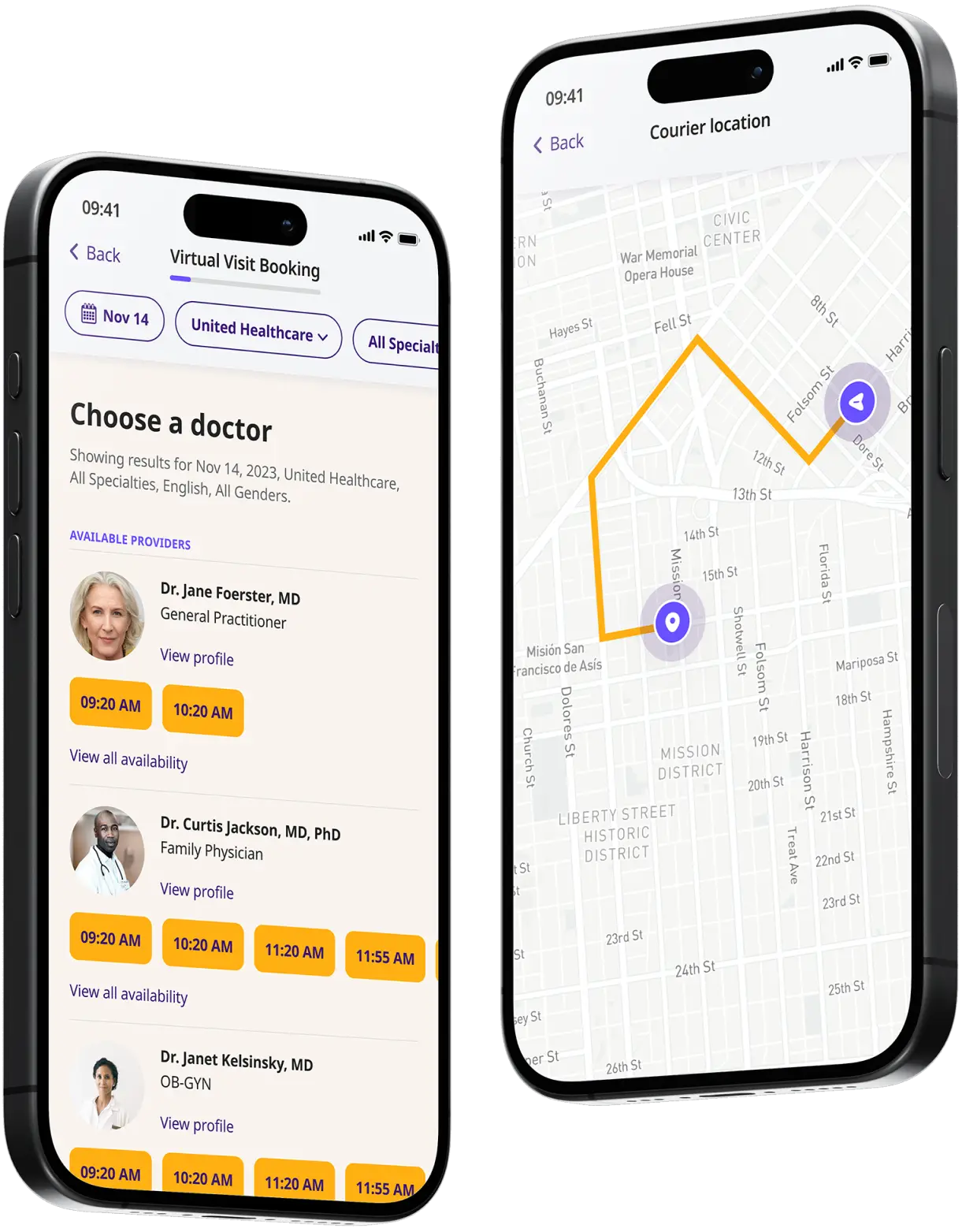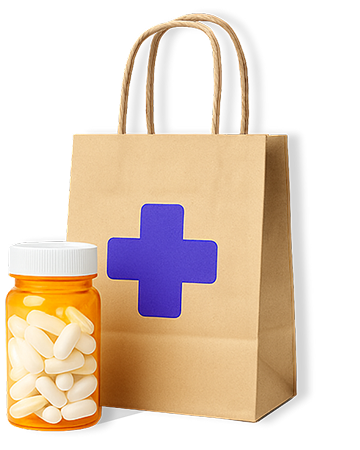Get a Nifedipine Prescription Online
Get a new nifedipine (Procardia) prescription or refill your medication online.
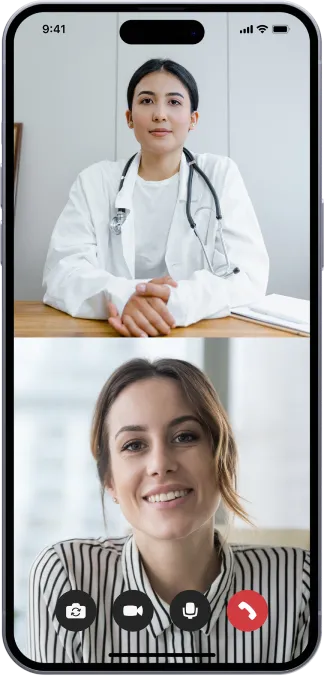
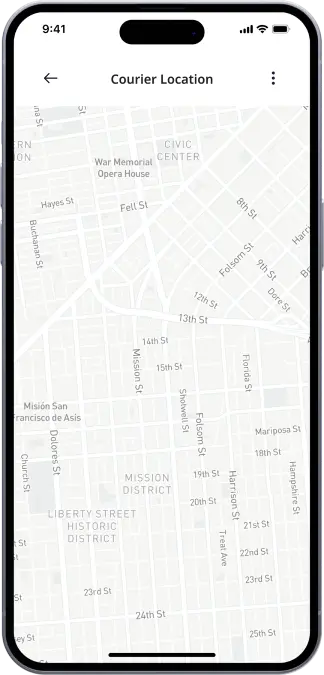
Available in 50 states. Insurance accepted.
Fast
virtual visits
24/7 care
assistants
Prescriptions
as needed

24/7 Personal Care
Consult with a physician in 15 minutes, refill an Rx or chat with our care assistants.

Affordable & Convenient
See your cost upfront and get treatment for hundreds of different conditions.

Insurance Accepted
We accept most major insurance plans, making healthcare easy and affordable.
See If Delivery Is Available Near You
Delivery Not Available
Enter your ZIP code to check if prescription delivery is available in your area and how soon your meds could arrive.
How to get started
Choose your doctor, start a virtual visit, and have your prescriptions sent to your preferred pharmacy for pickup — all in just a few easy steps.
Choose a doctor
Choose a physician by availability, specialty, ratings, and more.
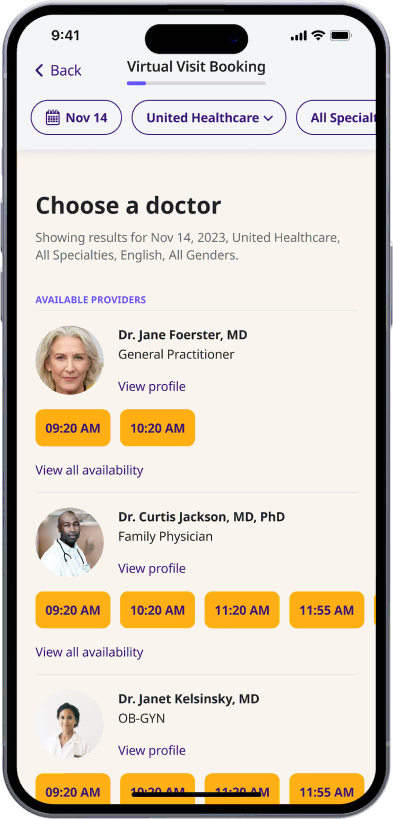
Start your video visit
Connect with a doctor in minutes on a secure video call.
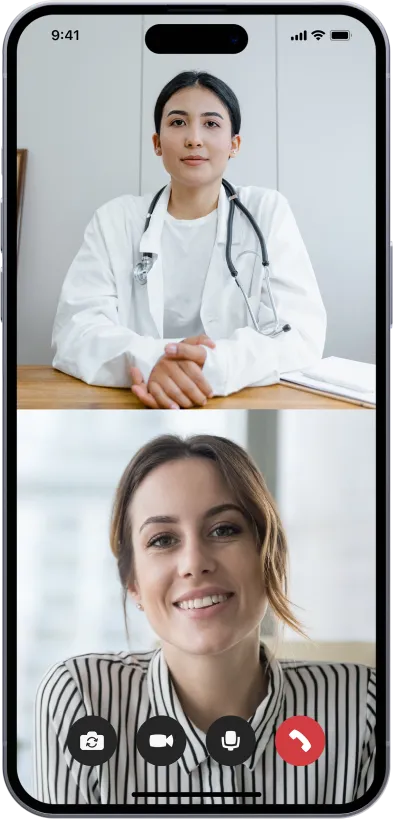
Get your prescription
Pick up your meds or have them delivered in as little as an hour.
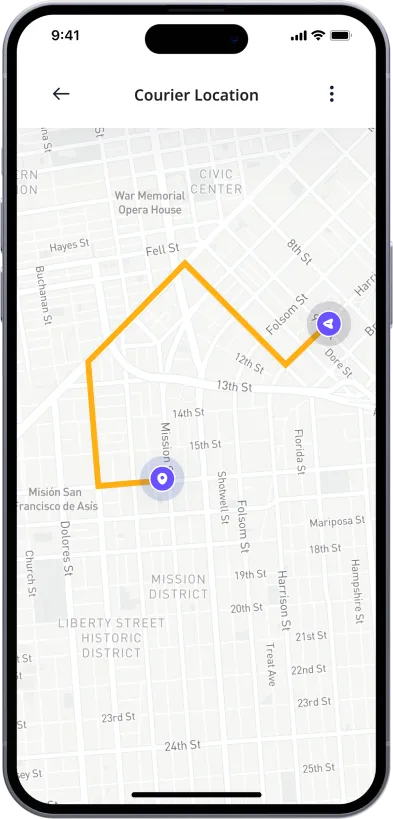
Available in 50 states. Insurance accepted.
One-Time
Physician Visit
One-time visit with a physician for diagnosis, treatment, Rx, labs, referrals, and doctor’s notes.
Accepted Insurances
See why people turn to DrHouse...
As seen in

Nifedipine (Generic Procardia, Adalat)
What Is Nifedipine?
Nifedipine is a prescription-only drug that’s known as a calcium channel blocker medication. Nifedipine can be used for multiple purposes, but the main usage and reason for prescription is for high blood pressure.
How Does Nifedipine Work?
Nifedipine belongs to a group of medicines called calcium channel blockers. It works by reducing or preventing the movement of calcium within your heart and blood vessels. Calcium channel blocking can result in lower blood pressure while increasing the supply of blood and oxygen to your heart while lowering the strain.
After taking your medication, you might see results within the same day, however, some patients might not see results for a couple of weeks. Whether or not you feel a difference before or after taking the medication, you should continue to use it as instructed when prescribed.
What Is Nifedipine Used For?
Nifedipine will generally be prescribed to patients who are experiencing high blood pressure, as well as experiencing anginal chest pain. This usage of this drug can also help to prevent symptoms of heart disease and heart attacks.
You should know that Nifedipine is not used as a cure for these conditions, but rather to control them and make them easier to treat while alleviating symptoms. Feeling better as a result of using Nifedipine does not mean that you have been cured, and you should not stop taking it as a result.
What Are the Side Effects of Nifedipine?
You should expect and be aware of the multiple side effects that you may experience when taking Nifedipine. While some are not serious, you might experience the following:
- Feeling flushed
- Experiencing dizziness
- Nausea
- Heart palpitations
- Swelling in your legs
- Headaches
- Constipation
- Fatigue
Aside from the common side effects, there are also a number of serious side effects. If you experience any of the following, you should make sure to stop taking your medication until you have spoken with your doctor about your symptoms:
- Eye whites turning yellow
- Skin turns yellow
If you experience chest pain that does not leave after a few minutes after taking Nifedipine, you should call emergency services immediately to seek medical attention.
Consuming grapefruit might increase the concentration of the drug in the blood, which can enhance side effects.
How to Take Nifedipine?
Nifedipine is to be taken orally and will come in the form of a capsule. Your healthcare provider will give you instructions on how often you should take this drug, as it may vary depending on the dosage. Generally, it should be taken around the same time each day, as to get the best effects without overdosing.
You should avoid taking this medication more or less than your healthcare provider has instructed, and if you are unclear you should contact them to learn more.
Patients should avoid taking this drug by choice, and should only stop the use of this medication if their doctor instructs them to do so.
You will want to make sure that you are taking your Nifedipine capsules on an empty stomach, around an hour before you eat, or two hours after you’ve eaten.
Frequently Asked Questions About Nifedipine
What to Avoid While Taking Nifedipine?
While taking Nifedipine you should avoid the following:
- Alcohol – Alcohol can increase the blood pressure-lowering effects of nifedipine which might increase the risk for side effects such as dizziness and lightheadedness.
- Grapefruit and Grapefruit Juice – Grapefruit can increase the amount of nifedipine in your bloodstream, which can lead to enhanced side effects.
- High sodium products – A high-sodium diet can counteract the blood pressure-lowering effects of Nifedipine.
The list of things to avoid while taking Nifedipine above is not exhaustive.
You should avoid certain medications and supplements while taking Nifedipine as they can interact with the drug and increase the risk of side effects. Examples would include, but are not limited to:
- Other blood pressure medication
- Some antifungal medications
- Antiseizure drugs
- Certain antibiotics
- Potassium supplements
Talk to your doctor or pharmacist about potential interactions and side effects before taking any medications.
Additionally, when starting the medication avoid activities that require alertness and coordination, as you may feel lightheaded after taking the drug until you know exactly how it affects you. Examples of activities that should be avoided are driving, operating machinery, or any activity that requires a high level of focus and discernment.
Is Nifedipine Safe?
When taken as prescribed, Nifedipine is generally a safe drug. However, it might not be safe for everyone and should only be taken when deemed appropriate by your healthcare provider.
What Is the Most Common Side Effect of Nifedipine?
The most common side effect of Nifedipine is flushing. This can sometimes be accompanied by a sensation of warmth or heat, and it primarily affects the face and neck. Other common side effects include:
- Feeling flushed
- Experiencing dizziness
- Nausea
- Heart palpitations
- Swelling in your legs
- Headaches
- Constipation
- Fatigue
How Long Does It Take for Nifedipine to Work?
The effects of Nifedipine can vary from one individual to another, and the speed at which it works can also depend on the dosage, formulation (immediate-release versus extended-release), and the condition being treated.
Overall Nifedipine starts working from day one but it may take a few weeks to fully take effect.
It’s also worth noting that even if you don’t “feel” different, the medication might still be working to lower your blood pressure or address angina. It’s essential to regularly monitor blood pressure and follow up with a healthcare provider to ensure the medication is working as intended and to make any necessary dosage adjustments.
What Is the Typical Dosage for Nifedipine?
The exact dosage for Nifedipine can vary and will depend on your individual condition and medical history as well as the formulation of Nifedipine. Nifedipine comes in two forms: extended-release and immediate-release.
Immediate-release tablets are typically taken 1 to 3 times per day while extended-release tablets can be taken once or twice a day.
Generally for immediate-release tablets (for adults), the initial dose is 10mg three times a day. And for the extended-release capsules, the initial dose is 30-60 mg once daily.
The dosages may be increased depending on your response and tolerance to the treatment.
Make sure to take your doses at consistent times and never stop taking the medication on your own. You should consult with your healthcare provider to determine when it is safe for you to discontinue Nifedipine use.
Can You Get Nifedipine Over-The-Counter (OTC)?
No, nifedipine is not available over-the-counter. It is a prescription-only medication and should only be taken as prescribed by your healthcare provider.
For more detailed information about nifedipine, you can refer to the following sources:
- Procardia (nifedipine) prescription label, Food and Drug Administration (FDA).
- Nifedipine, Drugs.com.
- Nifedipine, MedlinePlus.
The content on this page has been medically reviewed for accuracy and comprehensiveness by Amy Dougherty, FNP-BC, AGAC
Related services
Explore more of our services tailored to your needs and discover additional ways we can support your healthcare needs.
Frequently asked questions


